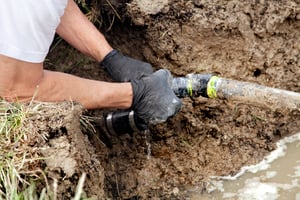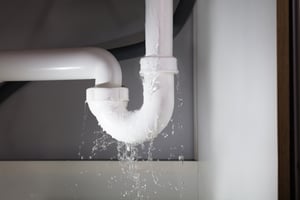Spring is a wonderful time of year. Unfortunately, spring can also come with rain, hail, high winds, tornadoes and whatever else Mother Nature has in store. Preparing before a severe storm hits is essential to potentially reducing storm damage to your home.
Here’s 10 quick and easy home tips you can use to prepare for the upcoming storm season.
1. Designate a safe place in your home to take shelter during a storm. This is ideally in the lowest level of your home with few windows or large furniture. Make sure all your family members know this is where to go in the event of a big storm.
2. Prepare a safe place for your pet(s). If you have pets keep in mind that storms, especially severe storms, will affect them too. Create a sleeping and eating area for your pets within the designated safe place of your home. Be sure to stock extra food, treats, and water.
Read: Storm Damage & Homeowners Insurance: 5 Things You Need to Know
3. Prepare an emergency kit. It’s a good idea to stockpile crucial items to help your family get through any power outage or delay in aid after a storm. Items to consider are:
- Extra batteries of all sizes
- Flashlights
- Battery-operated radio
- Portable cell phone charger
- First-aid kit
- Bottled water
- Non-perishable snacks and meals
- Blankets
- Cash

4. Check any wall air conditioners. Disastersafety.org recommends checking your wall air conditioners. Since these appliances essentially exist in a hole in your home, it’s important to make sure they’re sealed correctly. Specifically check:
- The caulking around the air conditioner’s sleeve. Fill any gaps or cracks you see in the caulking
- Weather stripping around the unit
- The internal drain to make sure water is flowing freely
5. Test your sump pump. Make sure the system is draining properly and mechanical components are operating well. Consider battery-powered backup options in case there is a power outage.
6. Clean your gutters. When the rain comes, you need a clear drainage path away from your roof. This will prevent water from pooling at your house’s foundation and possibly entering your basement.
7. Secure your gutters. Make sure all downspouts and extensions are in place and are the proper length to move water away from your foundation. It’s generally recommended to divert water about 10 feet away from your home.
8. Make sure your trees are pruned and healthy. Windstorms can do a lot of damage. Get rid of trees that pose a potential risk for falling on your home or on another property you value.

9. Secure your outdoor gear. This includes furniture, tools, mowers, etc. If they are not in use, put them away or tie them down. These can become either damaged or the cause of damage in a high wind situation.
Read: Storm Damage & Homeowners Insurance: 5 Things You Need to Know
10. Stay informed. Make sure you have a way of getting weather notifications. Several free weather apps will send you a push notification when severe weather is in your area. Keep in mind storms can come in the middle of the night. So, be sure to allow notifications and keep the sound on to hear the alerts. There are also weather radios you can use in your home that will alert you of severe storms any time of day.
Preparation before severe storms can make a huge difference in not only reducing storm damage but also the stress on you and your family. By implementing these simple home tips, you may be able to make this season’s severe storms feel a little less severe.
Posted by Auto-Owners Insurance.
 If you own a home, you know that if something breaks or fails, it can cause unexpected and devastating expenses. Underground lines that service a home for such things as water, sewer, gas, and internet can break, requiring costly repairs. While most of these lines aren’t covered by a base homeowner’s insurance policy, many insurance carriers offer optional limited coverage that can be added.
If you own a home, you know that if something breaks or fails, it can cause unexpected and devastating expenses. Underground lines that service a home for such things as water, sewer, gas, and internet can break, requiring costly repairs. While most of these lines aren’t covered by a base homeowner’s insurance policy, many insurance carriers offer optional limited coverage that can be added.








